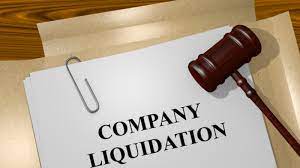
You financed the restaurant for a friend or relative, and now it’s run into financial difficulty. This could be due to a variety of reasons. At this point, the reason doesn’t really matter.
You are now in liquidation mode. Just keep the utilities on long enough to sell all the assets.
Let’s have another look at your security, and see what items here you may need should you decide to operate the restaurant as a going concern. The ones that you need for this purpose are noted in BOLD.
Here’s the security:
1) Chattel mortgage, upon specific chattels for major purchases, big ticket items, tools of the trade,
2) Assignment of Leases upon specific chattels for major purchases, big ticket items, tools of the trade,
3) accounts receivable,
4) assignment of book debts,
5) General Security Agreement,
6) Assignment of Leases upon business premises,
7) Assignment of Options to Lease upon business premises,
8) Assignment of Agreements to Purchase upon business premises,
9) Assignment of Options to Purchase upon business premises,
10) A pledge of the shares of the operating company,
11) A pledge of the shares of the holding company,
12) An assignment of the suppliers’ accounts,
13) A pledge of any intellectual property,
14) An agreement to be named as an additional insured on the insurance policy,
15) An agreement by the insurer to waive its rights of subrogation,
16) An agreement to the assignment of the telephone number,
17) An agreement to the assignment of the website,
18) An Authorization to examine the books,
19) An Authorization to examine the bank accounts,
20) An Authorization to examine the HST returns,
21) An Authorization to examine the Income Tax returns,
22) An Authorization to examine the Workplace Safety assessments and payments,
23) A personal guarantee of the owner, proprietor,
24) A personal guarantee of the spouse of the owner proprietor,
25) A copy of all suppliers’ contracts, including books of accounts, inventories and entitlements.
Many times, lenders will wonder: why do I need all that security? In this situation, numerous items were necessary just to liquidate the business assets.
The above items can be used somewhat as a checklist if you need to follow through.
You have to pay off any chattel mortgages. But, make sure they were registered under the PPSA (Personal Property Security Act) ahead of your interest. Convert everything into cash as soon as possible. This means QUICKLY, within 7 to 10 days. The longer everything stretches out, the more money you are losing.
Make sure you don’t pick up or assume any indebtedness throughout the process. Use a bailiff or receiver, since they will be familiar with the process.
If you are selling as a going concern, you must comply with the disclosure requirements under the Real Estate and Business Brokers Act, 2002. That means you will have to pay off all the creditors.
Let’s assume you don’t have enough money. Appoint a receiver, and just sell the assets. Don’t sell the business. If you do, you are stuck with all the debts. Make sure that you sell the “tools of the trade”, only a list of certain assets. And, that’s it, nothing else! The moment you either sell the business or the enterprise, then you must pay off all the creditors. The liquidation route avoids that, if you do it right.
In such circumstances, be sure to consult with a trustee in bankruptcy, a lawyer or solicitor practising in the insolvency field or someone who possesses the right expertise.
Brian Madigan LL.B., Broker
www.OntarioRealEstateSource.com
